Estratégias de Descarbonização para um Futuro Sustentável
- projectosus2trans
- 29 de jul. de 2024
- 10 min de leitura
Atualizado: 26 de set. de 2024
Global emissions are rising, and the Paris Agreement's goals—to reduce greenhouse gas emissions by over 40% by 2030—are becoming increasingly critical. The importance of studying different decarbonization strategies lies in their potential to provide tailored and effective solutions for achieving sustainability. By understanding the diverse pathways available, decision-makers in public, private or collective organizations, can implement the most suitable measures to meet their specific regional and sectoral needs, thus optimizing the transition to a low-carbon society.
A Taxonomy of Decarbonization Pathways
Through a systematic analysis of one million research papers published between 2011 and 2021 (Box 1), six primary decarbonization pathways were identified (Fig. 1). These pathways represent a wide range of literature and demonstrate the complex interplay of technology, behavior, and policy required for effective decarbonization. The pathways are categorized by four dimensions: energy services; economics; planning; infrastructure; transition. The pathways are presented through their salient features in terms of differentiated innovative meaning, organizational implementation, and local application.

Figure 1. Decarbonization pathways identified in the systematic literature review.
Box 1. A Artificial Intelligence and Machine Learning Approach: Summary In this investigation, a systematic approach was adopted to analyze one million research papers published between 2011 and 2021. We adopted a fully automated, non-biases approach, using advanced artificial (AI) intelligence techniques to classify and categorize the literature into six primary decarbonization pathways. Key methods included: 1. Data Collection and Preprocessing: - A comprehensive dataset of research papers was assembled from major scientific databases such as Web of Science. - Preprocessing steps involved removing duplicates, standardizing formats, and ensuring data quality. 2. Text Mining and Natural Language Processing (NLP): - Text mining techniques were applied to extract relevant information from the papers. - NLP tools were used to identify key themes, terms, and concepts related to decarbonization. 3. Classification and Taxonomy Development: - Machine learning (ML) algorithms classified the papers into six main clusters that indicated the decarbonization pathways. - Five transversal issues or dimensions were identified that enable a categorization of the pathways and a detailed taxonomy. 4. Statistical Analysis: - Statistical methods were employed to analyze trends and patterns across major regions (EU27, China, US, Japan). - The publication profiles of these regions were compared to understand the focus areas and the change of research directions over time. 5. Validation and Robustness Checks: - Cross-validation techniques ensured the robustness and accuracy of the classification. - Sensitivity analyses were conducted to verify the stability of the results.
These methods provided a comprehensive understanding of different decarbonization pathways, highlighting global distinct efforts and drivers of pathways adoption, while informing policy and strategic decisions. |
1. Technology Breakthrough (27%)
- Most prevalent pathway in the literature (27% see Fig. 1-a).
- Focuses on cutting-edge technologies such as microbial fuel cells, electrocatalysis, lithium- ion batteries, and carbon capture and sequestration (CCS).
- Aims to integrate these cutting-edge technologies into existing infrastructures to create highly efficient and sustainable energy systems.
- Predominantly in China, the US, and Japan, emphasizing advanced research and development capabilities.
2. Electrification of Uses (20%)
- Involves “electrifying everything” like heating, industrial processes, and transportation to reduce carbon footprints.
- Includes rapid growth of charging infrastructures for electric vehicles and of smarter electric distribution grids, as well as energy efficiency enhancements and taking advantage of decarbonized electricity.
- Leading pathway in the EU27, demonstrating a shift towards electric solutions and renewable energy integration.
3. Integrated Policy (15%)
- Encompasses harmonized policy frameworks, at multiple levels (international, national, regional, local/urban)
- Includes regulations, carbon taxes, and market-driven incentives to drive comprehensive change.
- Strong emphasis in the EU27, promoting coordinated, multi-sectoral transformations.
4. Decarbonization of Electricity (14%)
- Focuses the decarbonization on transitioning from fossil fuel-based power generation to low-carbon sources, such as solar and wind energy.
- The integration of higher shares of intermittent renewable energy sources into existing electrical systems is a key challenge of this pathway.
- A significant focus across all regions, highlighting the need for renewable energy sources and energy storage systems.
5. Demand Reduction & Co-benefits (13%)
- Targets energy conservation and co-benefits like improved air quality and cost savings
- Societal tilt towards low energy demand through efficient energy use namely with urban planning and public transport initiatives.
- Receives high attention in China.
6. Land Use & Circularity (9%)
- Broader vision of minimal waste and maximized resource use.
- Advocates for sustainable land practices and circular economy principles, such as converting waste to energy and maximizing resource use.
- Less emphasis globally (slightly higher in EU27) but crucial for sustainable land management and resource efficiency.
Time and Regional Trends in Decarbonization Literature
Figure 2 presents the time and regional trends in decarbonization literature.
Figure 2. Evolution of the pathways in the literature over time and in main regions.
Note: Evolution of the share of the different decarbonization pathways between 2011 and 2021. Number of research articles by main publishing regions in the same period. Trends in the pathways in the EU27, China, US, and Japan. Integrated Policy (InPo), Technology Breakthrough (TeBr), Demand Reduction & Co-benefits (DeRe), Decarbonization of Electricity (DeEl), Electrification of Uses (ElUs), and Land Use & Circularity (LUCi).
Two thirds of the publications with relevance for decarbonization come from four regions: the European Union (EU27); China; the United States (US); and Japan (Fig.1-b).
The European Union (EU27) leads in number of publications and prioritizes “Electrification of Uses” and particularly the “Integrated Policy”, driven by a steady increase in publications from the early 2020s.
China, the United States, and Japan focus on the “Technology Breakthrough” pathway, with significant research in energy storage, advanced materials, and carbon capture. China's rapid rise in this area underscores its investment in R&D, while the US and Japan leverage their industrial tradition and high-tech capabilities to seek innovations for emissions reductions.
The “Decarbonization of Electricity” and “Electricity of Uses” pathways receive significant attention across all regions. In contrast, “Land Use and Circularity” and “Demand Reduction” has been given relatively little attention apart from the EU27 and China, respectively. Regional strengths and profiles shape these priorities, guiding the choices of the decarbonization pathways over time.
Regional and Technological Drivers of Decarbonization Pathways
The progress that countries made in decarbonization should weight in their decision to focus on one or other decarbonization pathway. If one takes per capita CO2 emissions in 2022 as a surrogate measure about the progresses made in decarbonization, the European Union (EU27) leads (6.2 tones), following China (8.0 t but rising), Japan (8.5 t), and the United States (US) (14.9 t).[1] In that sense, the EU's policy environment and advancements in renewable energy sources, particularly solar and wind power, support the energy transition, highlighting the region's moving focus towards increasing integrative solutions and general electrification to achieve decarbonization goals.
Competencies are needed to pursue certain strategies. The interactions between decarbonization pathways and scientific fields reveal the importance of multidisciplinary approaches (Fig. 3, left-hand). On the other hand, the higher share of Environmental and Computer Science, as well as Business, in the EU’s publications relates to the increasing focus on Integrated Policy and Electrification of Uses in this region (Fig. 3, right-hand). Conversely, the relatively higher shares of Material Sciences and Chemistry in the other countries’ publications drive the choice for the Technology Breakthroughs pathway. These results highlight the importance of the competences for exploring certain directions and indicate more likely strategies of decarbonization by region to reach the objectives for 2030 at least.

Figure 3. Scientific concepts underlying each decarboniziation pathway.
Note: We were able to identify the scientific areas underpinning 99.35% of the papers used to extract the typology. The number in brackets refers to thousand papers.
Technology maturity is an important issue for the choice of decarbonization pathways. In a comprehensive analysis of scientific documents from 2011 to 2021, 20 technology domains were identified as most promising based on two complementary data-mining techniques (Costa et al., 2023). Twelve technology domains only significantly supported the six literature-derived decarbonization pathways. "Electrification of uses" stood out for its high readiness and CO2 reduction potential, with integrated policies/systems and demand reduction following next (Table 1). However, electrifying sectors such as industry and transport can raise significant challenges.
Table 1. Technological risk associated with each decarbonization pathway

Preliminary Evidence of Decarbonization in Firms at Regional Level
We categorized the firms' projects funded by the Portuguese innovation incentive scheme PT2020, supported by the EU, within the period of 2014-2020, according to their respective (dominant) decarbonization pathways. This allowed us to identify and compare the dynamics of decarbonization at the firm level, sectoral, and regional levels.
The proportion of decarbonization projects is modest, corresponding to less than 10% of all 2,800 firms in the sample. The share of decarbonization projects is comparatively higher for older firms and small-sized companies, denoting the role of the incentive system in supporting established firms in transition processes.
Eighty percent of decarbonization projects focused on Demand Reduction and Decarbonization of Electricity, even if projects may be relevant for more than one strategy. The metallurgy, textile, machinery, and oil & chemicals sectors were the most active, following a distribution of pathways similar to the country, with the latter sector having relatively more projects on Technology Breakthrough.
The number of decarbonization projects is higher in regions with more advanced industrial structures, and they follow similar distribution of decarbonization pathways (see Fig.4 a-b). Overall, the effects of the PT2020 Incentive System show that firms are slowly responding to the challenge of decarbonization, but there are indications of lower capacity in regions with less advanced industrial structures.
Figure 4. Share of industry on CO2 emissions (a) and regional distribution of project by decarbonization pathways (b). Source: Vale et al.,2024.
Other factors and Co-benefits of the Decarbonization Pathways
The decarbonization pathways have other co-benefits such as enhancement of energy security. We compared supply-side with energy demand interventions in terms of their impact to improve energy security across a series of indicators for different countries. Demand-side interventions more consistently increased energy security (Bento et al., 2024). Therefore, Demand Reduction & Co-benefits and Electrification of Uses should have greater benefits in reinforcing energy security as they include more demand-side interventions, compared to pathways such as Technology Breakthrough or Decarbonization of Electricity, which are more supply-side oriented.
Climate policies can influence the behavior of companies and consumers. In a study based on the responses of multinational corporations to the Climate Disclosure Project (CDP), an international initiative in the field of carbon mitigation of business, firms tended to adopt significantly higher internal carbon prices (Bento et al, 2021). These national climate policies refer to the adoption of carbon taxes, which are an important instrument of the Integrated Policy pathway. Therefore, the study shows evidence that this particular pathway can effectively impact firms’ strategies.
The research also aimed to understand how policies can contribute to accelerate low carbon transition, while guaranteeing that such transition is associated with economic and social transformation.
We systematically collected and compared a broad set of decarbonization policies (3400) from four main world regions - Europe, US, China and Japan – in order to assess their transformative potential (Sousa et al, 2023). Policies were assessed for their capacity to provide a clear direction towards decarbonization goals – based on their alignment with the decarbonization pathways; and for their capacity to induce transformative effects – based on the level of incorporation of key “transformative mechanisms” identified in the literature: encourage experimentation, engage a diversity of actors, encompass activities of a variety of sectors, involve multiscale coordination, enable reflexivity.
The research found that there still is a relatively limited incidence of policies with transformative – and especially with very transformative (i.e. with 3 or more mechanisms) – potential, and that such incidence varied between world regions (Figure 5). This confirms that some world regions have attempted more than others to combine decarbonization with socio-economic transformation (Figure 6).

Figure 5. Incidence of transformative policies

Figure 6. Type of policies by world region
Key Takeaways for Action 1. General Takeaways: - A multi-faceted approach is essential for effective decarbonization. All identified pathways combine in different degrees policy integration, technological innovation, and behavioral changes. - Decarbonization pathways depend on local resources and competencies. Collaboration across sectors and regions is crucial to leverage strengths and share successful strategies. - Decarbonization progress changes needs and focus over time. Continuous research and development (R&D) is crucial to widen options and to keep pace with evolving challenges.
2. For Policymakers: - Develop and implement comprehensive policy frameworks aligned with the decarbonization needs (to reduce the agent’s uncertainty) and incentivize technology innovation and diffusion along with behavior change such as promotion of energy conservation and sustainable practices (to stimulate action). - Foster international cooperation to share and get access to best practices and technological advancements. - Leverage available resources and competences to promote decarbonization, particularly in the least developed areas that are lagging the sustainable transition. - Encourage experimentation, engage diverse actors, multi-sectoral integration, multi-scale coordination, and foster reflexivity for more transformative effects.
3. For Decision Makers in Private Organizations: - Promote the electrification of industrial processes and decarbonization within supply chains, while working with consumers to reduce the lifecycle carbon footprint of the goods and services. - Collaborate with governments and NGOs to align corporate strategies with national and global decarbonization goals. - Invest in organizational and technological innovations and integrate them into business operations to accelerate the transition of the established activities.
4. For NGOs: - Advocate for policies that support sustainable land use and circular economy practices, an overlooked area in the literature. - Raise public awareness about the importance of decarbonization and how individuals can contribute to these efforts. - Facilitate community-based discussion on renewable energy projects and energy conservation initiatives. |
By leveraging these pathways and insights, stakeholders across all sectors can effectively contribute to a sustainable and decarbonized future. The diversity in approaches shown in the typology of decarbonization pathways highlights the importance of tailored strategies that align with regional strengths and progress, ensuring a holistic transition to low-carbon economies.
[1] Global Carbon Budget (2023) and OurWorldinData: https://ourworldindata.org/co2-emissions-metrics
References
Alves T., Ribeiro R., Bento N. (2023). “Typology of pathways for sustainable transformation,” Proceedings of the DRUID23 NOVA School of Business and Economics, Lisbon, June 10- 12, 2023.
Vale M, Alves T., Fontes M., Mamede R., Bento N. (2024). “Innovation and decarbonization strategies of firms: insights from the Portugal 2020 program and relation to local contexts,” GEOINNO 2024 Delivering transformative change: conceptions, contexts and concepts, University of Manchester, January 10th- 12th 2024.
Costa, P. M., Tomé, P., Bento, N., & Almeida, B. (2023). “Identifying Promising Domains of Decarbonization Technologies: an Improved Methodology,” In 2023 8th International Conference on Smart and Sustainable Technologies 2023 (SpliTech), IEEE, DOI: 10.23919/SpliTech58164.2023.10193705
Bento N., Grubler A., Boza-Kiss B., De Stercke S., Krey V., McCollum D., Zimm C., Alves T. (2024), “Leverage demand-side policies for energy security,” Science 383(6686), 946-949. https://doi.org/10.1126/science.adj6150
Sousa, C., Fontes, M. and Bento, N. (2023). Transformative mechanisms in decarbonization policies: a structured approach, paper presented at 18th IAEE European Conference, Milan, 24-27 July 2023.







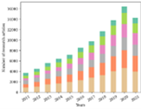


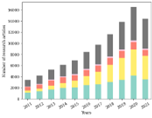




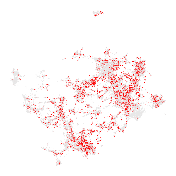


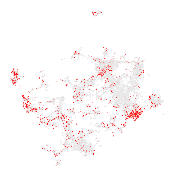


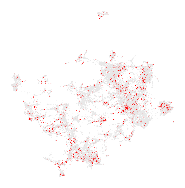


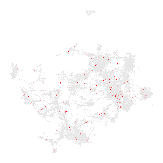

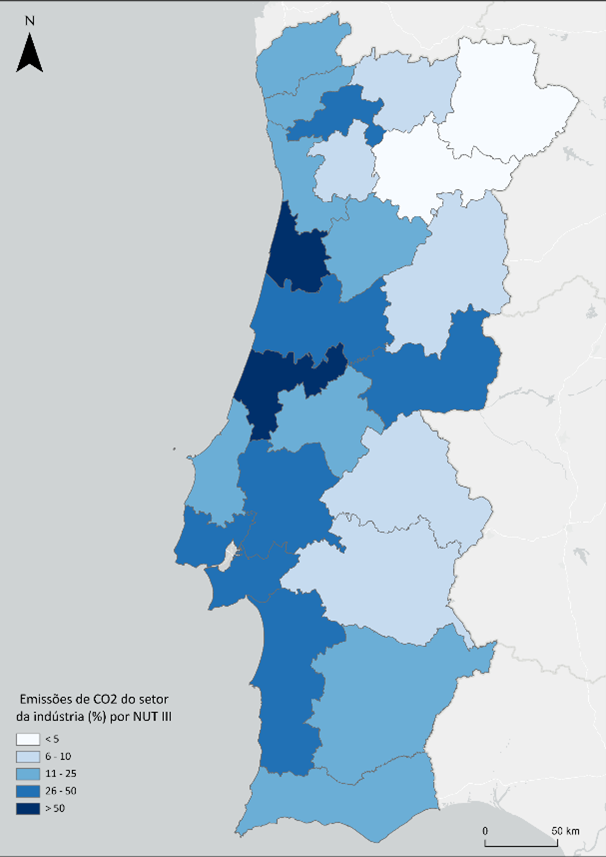

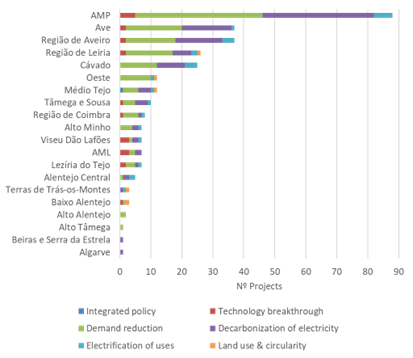
Comments